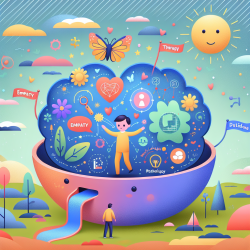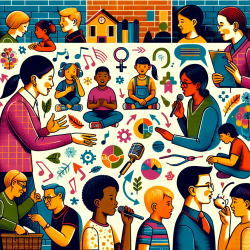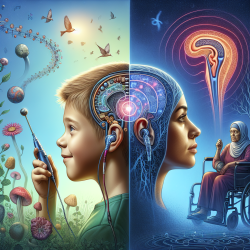Understanding the Intersection of Social Stressors and Air Pollution
As a speech-language pathologist, understanding the broader environmental factors that impact child development is crucial. The research article "Social stressors and air pollution across New York City communities: a spatial approach for assessing correlations among multiple exposures" provides valuable insights into how social stressors and air pollution intersect to affect health outcomes, particularly in children.
Key Findings from the Research
The study utilized a spatial approach to examine the relationship between social stressors, such as crime and crowding, and air pollution in New York City. The findings highlighted that:
- Social stressors and air pollution are not consistently correlated, indicating that each has unique spatial patterns.
- Different social stressors, such as violent crime and crowding, have varying impacts on health outcomes like childhood asthma.
- Areas with high levels of social stressors did not always correlate with high pollution levels, challenging common assumptions about environmental health disparities.
Implications for Speech-Language Pathologists
Understanding these findings can enhance your practice in several ways:
- Holistic Assessment: Incorporate questions about environmental and social stressors in your assessments. Understanding a child's exposure to these factors can provide a more comprehensive view of their challenges.
- Interdisciplinary Collaboration: Work with environmental health experts to better understand the local stressors affecting your clients. This can lead to more targeted interventions.
- Advocacy: Use this data to advocate for policies that address both social stressors and pollution in your community, ultimately improving health outcomes for children.
Encouraging Further Research
This study opens the door for further research into how these factors specifically affect speech and language development. Consider exploring:
- The impact of chronic stress from social stressors on language acquisition and cognitive development.
- How exposure to air pollution might affect auditory processing and speech development.
- Developing interventions that mitigate the effects of these environmental factors on communication disorders.
Conclusion
By integrating the insights from this research into your practice, you can make more informed, data-driven decisions that enhance outcomes for children. Understanding the complex interplay between social stressors and environmental factors is essential for creating effective, holistic treatment plans.
To read the original research paper, please follow this link: Social stressors and air pollution across New York City communities: a spatial approach for assessing correlations among multiple exposures.










